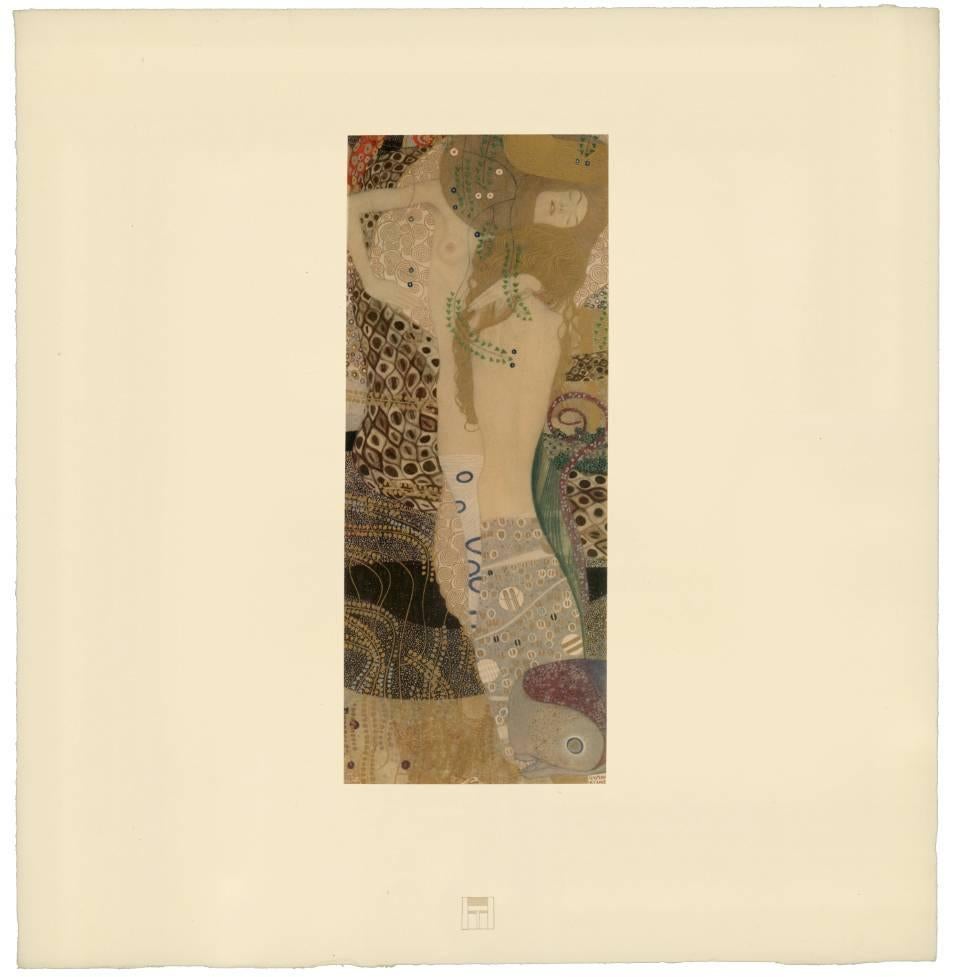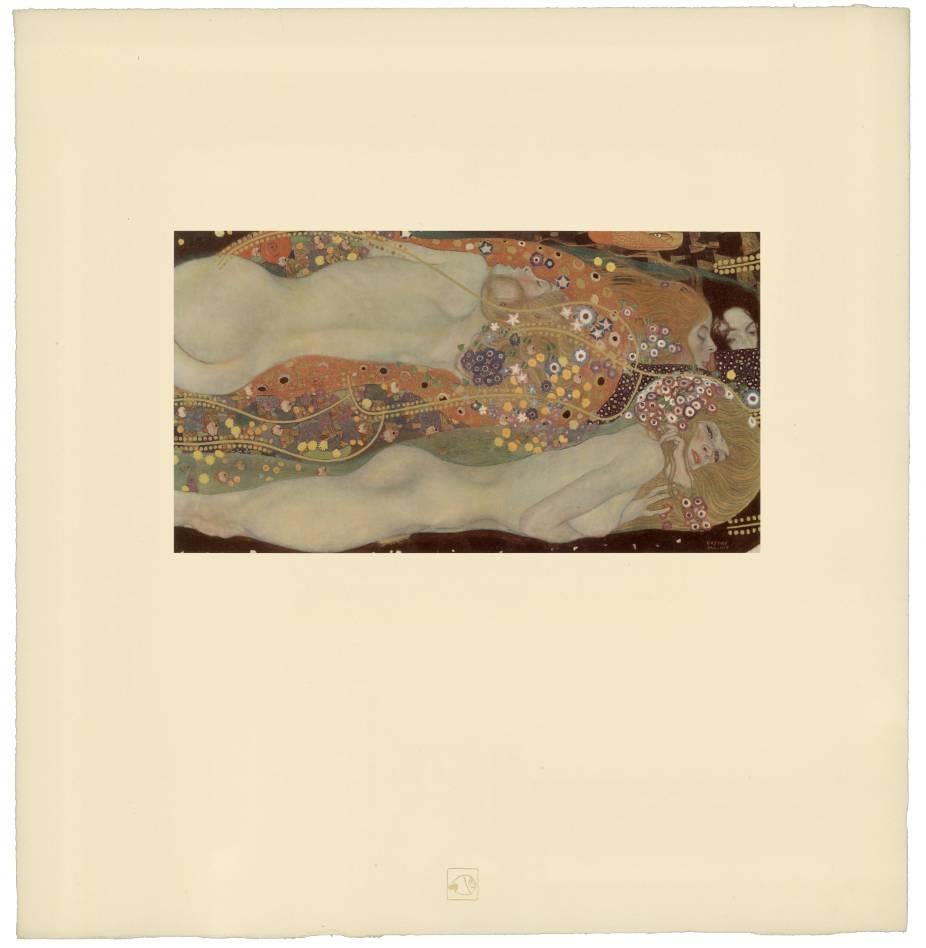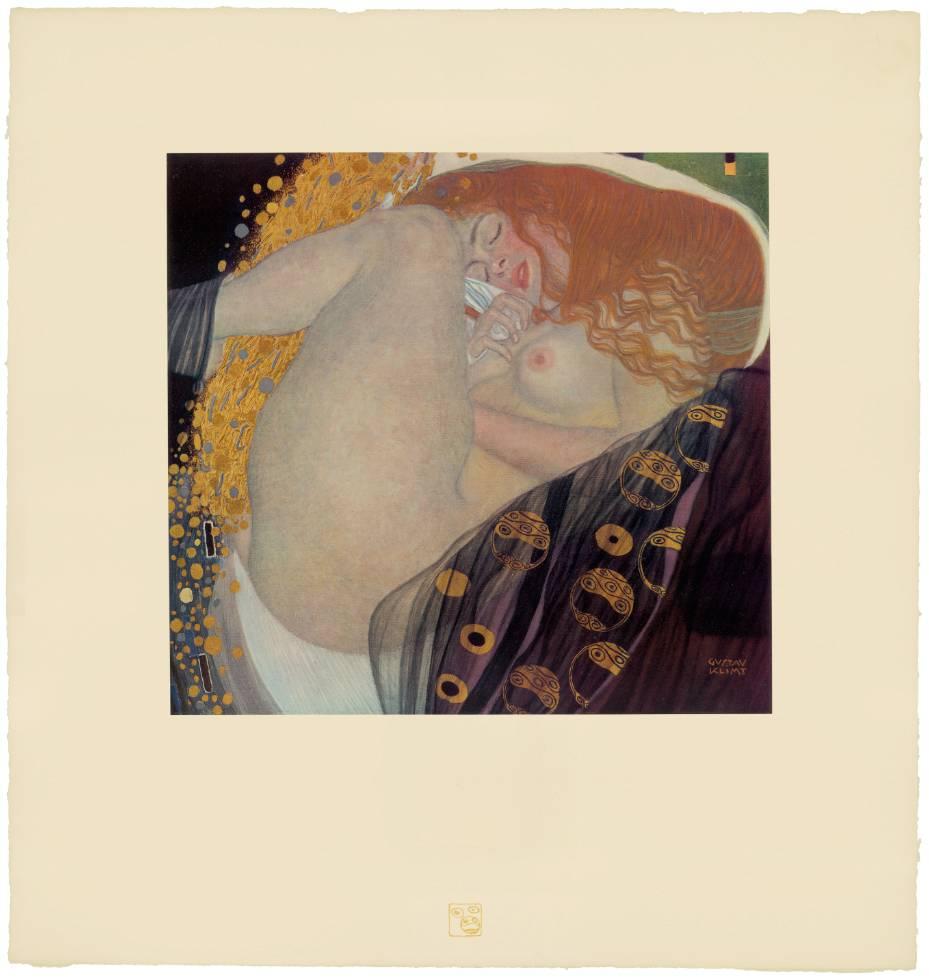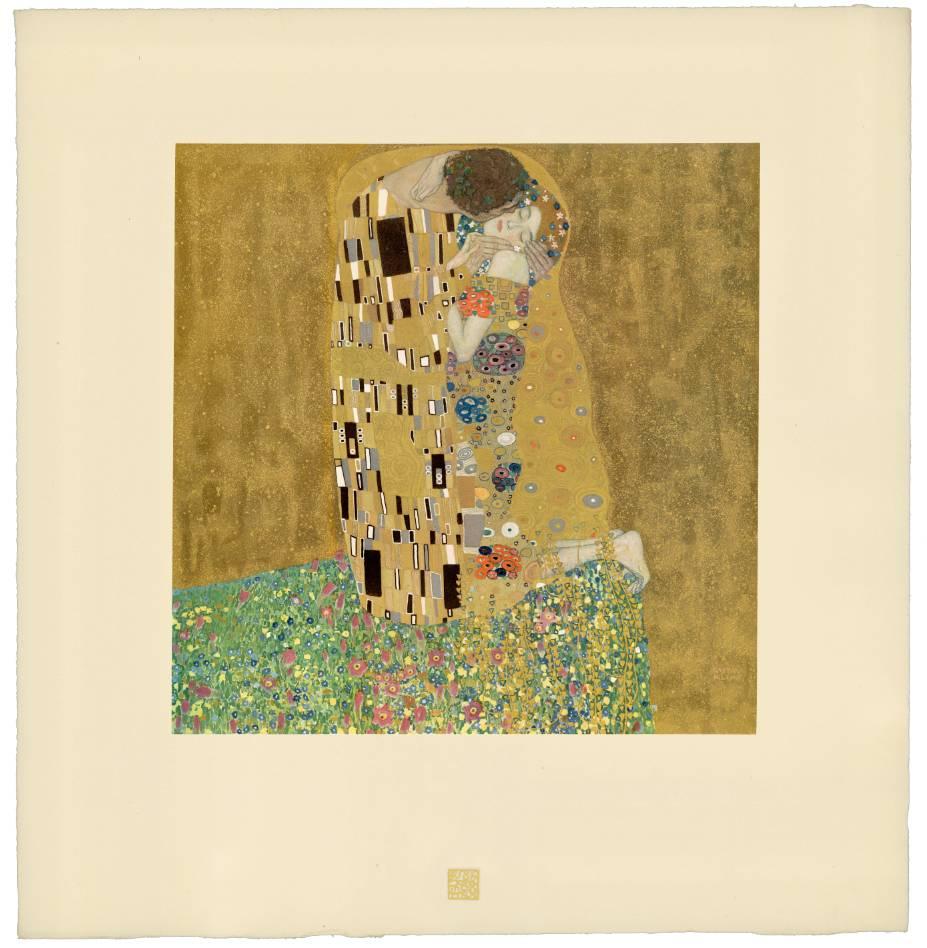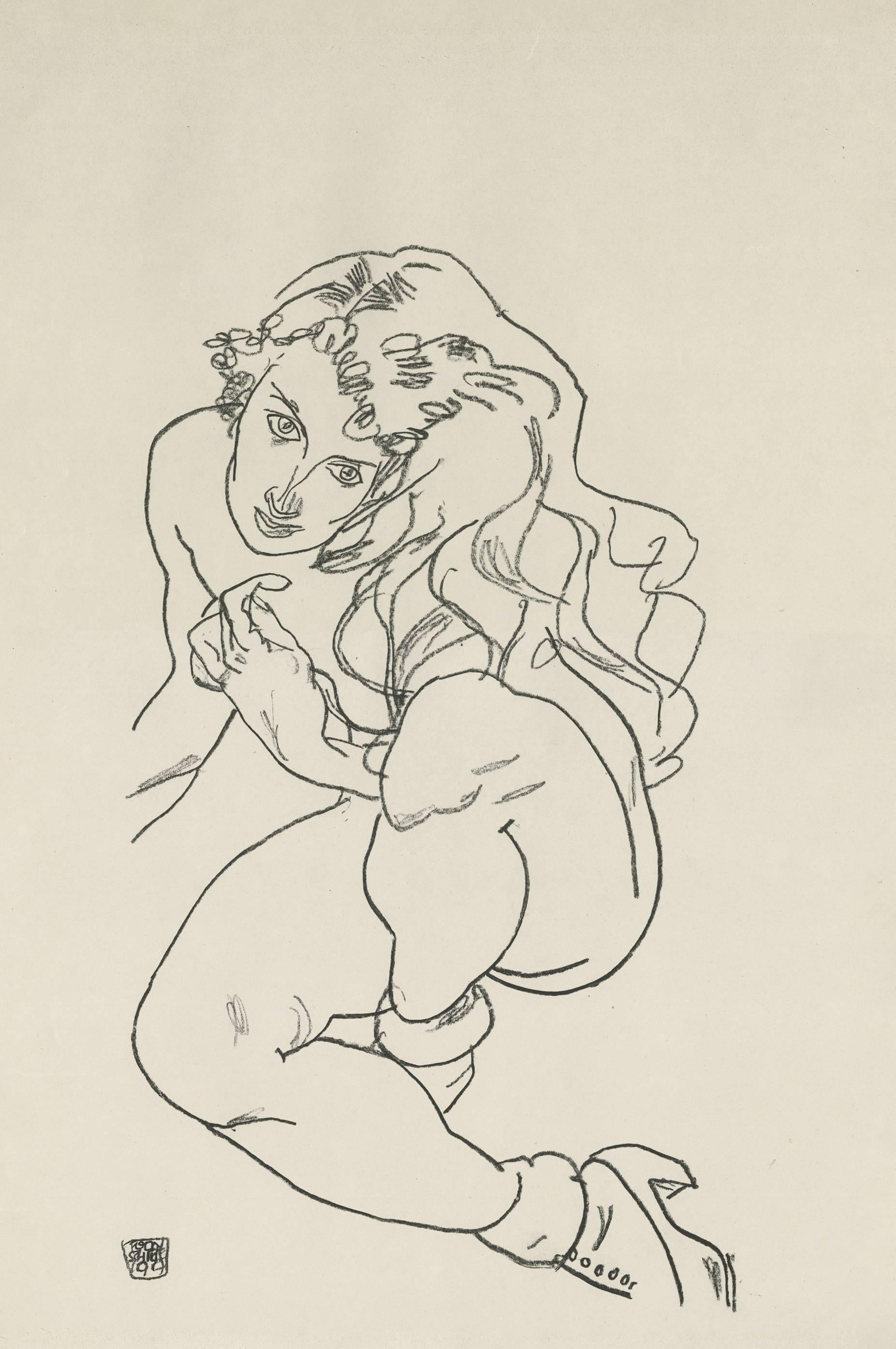Items Similar to DIE TRAUME BESCHAUTE (OBSERVED IN A DREAM)
Want more images or videos?
Request additional images or videos from the seller
1 of 7
(after) Egon SchieleDIE TRAUME BESCHAUTE (OBSERVED IN A DREAM)c 1920
c 1920
About the Item
Published anonymously c. 1920, Vienna, in an edition of 100, after the original watercolor and pencil on paper, titled in the plate at the top: “DIE TRAUM/BESCHAUTE” and signed and dated in the plate middle right: “Egon/Schiele/1911”; printed in color and marked in lower right by the printer: “A.K.” who is believed to be Andreas Krampolek
Egon Schiele’s artistic output in 1911 reveals a dramatic maturation as well as a willingness to boldly confront social taboos. In his deepening exploration into the way one sees and relates to the world, Schiele delved into literary sources such as Arthur Rimbaud and Frederic Nietzsche who pushed the boundaries of accepted thought. Within this literary context, it was Schiele’s own contemporary Vienna where the most revolutionary ideas and trends were germinating. Sigmund Freud’s seminal book, The Interpretation of Dreams, about the power of the unconscious mind, had literally taken hold of popular consciousness. By then in multiple printings, Freud found even greater mass appeal for his theses by publishing an abridged version in 1911 entitled, On Dreams. Schiele’s image and title conveys and explores Freudian dream theory which posits that civilization’s repression of an individual’s urges and impulses must result in a release somehow such as in a dream. Emboldened by Freud’s theories, Schiele continued to push his artistic inquiry into rarely treated subject matter. He invited his viewers to confront an image of a barely clad female with splayed legs whose two hands spread the labia wide to reveal her vulva and clitoris. Perhaps on first glance, the viewer might determine that this is purely a pornographic image; however, read in a Freudian context, Schiele dares to present us with the opportunity to contemplate a dream in the waking state.
As Freud asserted, dream content is often disturbing so the unconscious protects itself by coding the content as symbolic language. Here Schiele encodes his dream image by utilizing the V-shape and triangle which are symbols often used to represent the female sex. Schiele’s female figure is pyramidal; her head serves as an apex while wide legs form a base. The torso, by contrast, forms an inverted triangle with each erect nipple giving emphasis to the pyramidal theme. These triangular shapes converge upon the vagina which is yet another study of triangularity. Portrayed in this unabashed way, the vagina symbolically takes on the appearance of other species such as a flower or even a bird with its labial wings extending outwards.
There are deliberate ambiguities to Schiele’s dream construct. Only one of the female’s eyes is visible. It is closed, perhaps in repose or in a moment of orgasmic surrender, and yet his subject’s hands display her sex in a deliberate manner as one would in a conscious and rational state. Schiele demonstrates the struggle between, what Freud termed, the Id and the Ego. Viewed in such a manner, the pelvic region takes on a sort of alternate persona in avian form. The jewels adorning the rings on each hand stare out like eyes. Pubic hair crowns this Id creature like feathers over a beak. Schiele creates, not one, but two heads in this psychological portrait study: one representing the external environment and another representing the unconscious psyche. As one final trope of observation, one can trace another triangle from the one closed eye to the two jeweled eyes below which intensely confront the viewer.
As much as Schiele’s images cover bold territory, the portfolio itself has a colorful history all its own. It is one which involves censorship, destruction and trials about morality. Born out of the lofty ideas and ambitions of artists and art lovers, the portfolio represents state of the art printing in its day as well as art as interstate commerce. The erotic subject matter of Schiele’s five images included in the portfolio necessitated discretion. The portfolio printed in an edition of 100 was published anonymously. The one-time printing, as it states on the cover page, was only for subscribers. Thus, from the portfolio’s inception, there is an implication of secrecy and exclusivity. Even the printer’s contribution is cryptic. Save for the discreet initials inconsistently marked on each printed sheet, no mention is made about the printer, its whereabouts or even the year in which the portfolio was created.
Scholars now believe the printer to be Andreas Krampolek (1869-1940), a Viennese art printer specializing in the collotype process. Upon his 40th anniversary of printing in 1923, Krampolek’s work was honored with an exhibition at Vienna’s Museum of Art and Industry. That same year was also a critical one in the story of the portfolio. In September, Karl Grunwald was tried before the Regional Court for Criminal Affairs in Vienna. Accused of disseminating pornographic prints, Grunwald was charged with a violation of the law on moral grounds. The prints in question were none other than the EGON SCHIELE: FUNF ZEICHNUNGEN portfolio. Grunwald had sent this portfolio to Hans Goltz in Munich who was a former art dealer of Schiele. Grunwald offered Goltz 200 sheets, or the equivalent of 40 portfolios, for purchase. Goltz declined the offer and returned the portfolio of Schiele prints to Grunwald in Vienna. Customs authorities intercepted the package and brought charges against Grunwald. Although a jury found Grunwald to be Not Guilty of any crime, the 200 sheets from the portfolio did not fare as well. Attorney General Hofrat Formanek pushed for a separate hearing with the intention of destroyingg the 200 images. In a bold act of censorship which recalled a similar outcome in court during Schiele’s lifetime, the art prints were destroyed by the court authorities. By late-1923, only 60 portfolios remained.
Karl Grunwald and Egon Schiele had met one another several years prior during the war early in 1917. Leopold Liegler, one of Schiele’s art patrons, intervened on Schiele’s behalf in an effort to get Schiele transferred out of combat duty and back to Vienna where he could better focus on his art. Appealing to Grunwald’s sensitivity for and appreciation of the arts, Liegler suggested the Military Supply Depot in Vienna where Grunwald was stationed as an option for Schiele. Indeed, through Grunwald’s help, Schiele was transferred there on 12 January, 1917. In Grunwald, Schiele found a champion. Grunwald modeled for Schiele and befriended him. By the Spring, Schiele had hatched his ambitious plan for an artistic gathering place. Schiele’s Kunsthalle was to be a public forum where poets, painters, sculptors, architects and musicians could freely interact. Among his recruits were leading artists such as Vienna Secession founders, Gustav Klimt and Hans Hoffmann; the composer Arnold Schoenberg and art patrons Liegler and Grunwald. One of the key features Schiele enthusiastically envisioned for Kunsthalle’s commercial possibilities was to act as “its own art dealer and publisher.”
Schiele’s print portfolios were the sole fruits of this dream. Though Schiele’s Kunsthalle died on the vine, his portfolios effectively superseded the fixed art exhibition space to create a mobile concept. In 1917 bookseller Richard Lanyi published the first series of Schiele’s reproduction prints to much critical and commercial success. Following the war, Grunwald opened the gallery, Alte und Moderne Kunst in Vienna. He remained committed to Schiele, even after his untimely death in 1918, by staging an exhibition of Schiele’s work in 1921. It was only natural that Grunwald would continue Schiele’s commercial and artistic vision by publishing his own portfolio of Schiele works. FUNF ZEICHNUNGEN was Grunwald’s great contribution to Schiele scholarship. That some of the original 100 have survived is all the more significant because without this portfolio, the public today would not have a record of two key works by Schiele which, sadly, were lost during the Nazi era.
- Creator:(after) Egon Schiele (1890 - 1918, Austrian)
- Creation Year:c 1920
- Dimensions:Height: 19.69 in (50 cm)Width: 12.8 in (32.5 cm)
- Medium:
- Movement & Style:
- Period:
- Condition:
- Gallery Location:Chicago, IL
- Reference Number:1stDibs: LU46731809693

About the Seller
5.0
Gold Seller
These expertly vetted sellers are highly rated and consistently exceed customer expectations.
Established in 2013
1stDibs seller since 2016
83 sales on 1stDibs
Typical response time: 2 hours
- ShippingRetrieving quote...Ships From: Chicago, IL
- Return PolicyA return for this item may be initiated within 3 days of delivery.
More From This SellerView All
- H.O. Miethke Das Werk folio "Water Snakes I" collotype printBy Gustav Klimt & K.K. Hof-und StaatsdruckereiLocated in Chicago, ILWater Snakes I, no. 9 from the first installment of Das Werk Gustav Klimts Known by various names, Women Friends, Girlfriends, Water Snakes I and what Kli...Category
Early 1900s Vienna Secession Figurative Prints
MaterialsPaper
- H.O. Miethke Das Werk folio "Judith I" collotype printBy Gustav Klimt & K.K. Hof-und StaatsdruckereiLocated in Chicago, ILJudith I, no. 9 from the second installment of Das Werk Gustav Klimts Much like his treatment of the Classical personage, Danae, from Greek mythology, Klimt’s depiction of Judith takes an Old Testament character, a heroine who avenges the death of her husband by killing an Assyrian king, and firmly positions her in his present-day Vienna. His multicolored collotype rips the canvas from its gilded frame which directly references the subject with its title: “Judith und Holofernes”. Now in print form, Judith, holding the severed head of a male in murky shadow, is the ultimate Viennese femme fatale. Her likeness is unmistakably similar to a former lover of Klimt’s and famous Viennese soprano, Anna von Mildenburg. Though his allusion to ancient Assyria is apt, Klimt literally lifted the gold patterned background’s design motif from a relief detail from Sennacherib’s Palace displayed in a London museum. His context then is contemporary. In a sensual and sexually powerful tour de force, Klimt’s Judith...Category
Early 1900s Vienna Secession Figurative Prints
MaterialsPaper, Ink
- H.O. Miethke Das Werk folio "Water Snakes II" collotype printBy Gustav Klimt & K.K. Hof-und StaatsdruckereiLocated in Chicago, ILWater Snakes II, no. 9 from the fourth installment of Das Werk Gustav Klimts The last painting Klimt exhibited with the Secession before resigning, Water ...Category
Early 1900s Vienna Secession Figurative Prints
MaterialsPaper
- H.O. Miethke Das Werk folio "The Kiss" collotype printBy Gustav Klimt & K.K. Hof-und StaatsdruckereiLocated in Chicago, ILThe Kiss, no. 1 from the fifth installment of Das Werk Gustav Klimts Undoubtedly Klimt’s best known and most reproduced images, this printed version of The Kiss is the only one with which Klimt was directly involved. Unveiled at Vienna’s Kunstschau 1908, and saved for the fifth and final delivery of Das Werk, The Kiss marks a triumph in Klimt’s career and represents a culmination of many themes in his oeuvre up to that point. After all of the controversy surrounding the State’s prior rejection of the University murals commissioned from Klimt, the Ministry of Education reversed their policy toward the artist with a show of wholehearted support by purchasing for the Osterreichische Galerie BelvedereThe Kiss while it still hung in the Kunstschau exhibit. Considered in relation to the eight multicolored collotypes which preceded its print debut in the Das Werk portfolio, The Kiss literally embraces all which came before it. The golden seaweed dangling in tresses from the lovers’ feet harkens back to Water Snakes I and II. The bed of flowers evokes the settings Klimt created in both The Golden Knight and The Sunflower. In fact, this image sprung out of a particularly happy summer spent in the company of Klimt’s lover, Emilie Floge...Category
Early 1900s Vienna Secession Figurative Prints
MaterialsHandmade Paper
- H.O. Miethke Das Werk folio "Danaë" collotype printBy Gustav Klimt & K.K. Hof-und StaatsdruckereiLocated in Chicago, ILDanaë, no. 2 from the fourth installment of Das Werk Gustav Klimts Danae originates from Greek mythology. She is the daughter of the King of Argos. Because a...Category
Early 1900s Vienna Secession Figurative Prints
MaterialsPaper
- E. Strache, Handzeichnungen folio, "Crouching Female Nude" Collotype plate VBy (after) Egon SchieleLocated in Chicago, ILEgon Schiele (1890 – 1918), AUSTRIA “ART CANNOT BE MODERN, ART IS PRIMORDIALLY ETERNAL.” -SCHIELE Defiantly iconoclastic in life and art, Egon Schiele is esteemed for his masterful...Category
1920s Vienna Secession Figurative Prints
MaterialsPaper
You May Also Like
- Original Vintage Secession Poster celebrating the emperor's jubileeLocated in Zurich, CHOriginal Vintage Poster by the Austrian artist Ferdinand Ludwig Graf, a member of the Hagenbund. This Viennese artist association moved as soon a...Category
Early 1900s Vienna Secession Figurative Prints
MaterialsPaper
- Of Youth —after Gustav Mahler's 'The Song of the Earth'Located in Myrtle Beach, SCArthur Paunzen, 'Von der Jugend' (Of Youth) from the suite 'Song of the Earth', etching, aquatint, and drypoint, 1920. Signed and titled in pencil. Signed in the plate, lower left. A fine, richly-inked impression, on cream, wove Japan paper; the full sheet with margins (2 1/4 to 4 1/4 inches), in good condition. Image size 12 1/4 x 9 1/16 inches; sheet size 19 3/4 x 13 5/8 inches. Matted to museum standards, unframed. ABOUT THIS WORK Pauzen’s suite of six etchings 'Das Lied von der Erde' (The Song of the Earth), published in 1920, was inspired by Gustav Mahler...Category
1920s Vienna Secession Figurative Prints
MaterialsEtching, Drypoint, Aquatint
- The Drunkard in Spring —after Gustav Mahler's 'The Song of the Earth'Located in Myrtle Beach, SCArthur Paunzen, 'Der Trunkene im Frühling' (The Drunkard in Spring) from the suite 'Song of the Earth', etching, aquatint, and drypoint, 1920. Signed and titled in pencil. Signed in the plate, lower right. A fine, richly-inked impression, on cream, wove Japan paper; the full sheet with margins (2 1/4 to 4 1/4 inches), in good condition. Image size 12 3/8 x 9 1/8 inches; sheet size 19 5/8 x 13 5/8 inches. Matted to museum standards, unframed. ABOUT THIS WORK Pauzen’s suite of six etchings 'Das Lied von der Erde' (The Song of the Earth), published in 1920, was inspired by Gustav Mahler...Category
1920s Vienna Secession Figurative Prints
MaterialsEtching, Drypoint, Aquatint
- The Solitary One in Autumn—after Gustav Mahler's 'The Song of the Earth'Located in Myrtle Beach, SCArthur Paunzen, 'Der Einsame im Herbst' (The Solitary One in Autumn) from the suite 'Song of the Earth', etching, aquatint, and drypoint, 1920. Signed and titled in pencil. Signed in the plate, lower left. A fine, richly-inked impression, on cream, wove Japan paper; the full sheet with margins (2 3/8 to 4 1/8 inches), in good condition. Image size 12 3/8 x 8 7/8 inches; sheet size 19 5/8 x 13 3/4 inches. Matted to museum standards, unframed. ABOUT THIS WORK Pauzen’s suite of six etchings 'Das Lied von der Erde' (The Song of the Earth), published in 1920, was inspired by Gustav Mahler...Category
1920s Vienna Secession Figurative Prints
MaterialsEtching, Drypoint, Aquatint
- POLSTER (The Cushion)By Max KurzweilLocated in Santa Monica, CAMAXIMILLIAN KURZWEIL (Austrian 1867-1916) DER POLSTER / THE CUSHION, 1903. Color woodcut printed on laid japon paper, affixed as usual to a support sheet from its upper sheet edge...Category
Early 1900s Vienna Secession Figurative Prints
MaterialsWoodcut
- Der PolsterBy Max KurzweilLocated in New York, NYKurzweil, Maximilian. Der Polster, 1903. Color woodcut on japon. Included as an insert in Pan. Unsigned. Framed.11 1/4 x 10 1/4. 1 Ref: Hofstatter, p. 241; Pabst, p. 154. Maximillian Kurzweil was the co-founder of the Vienna Secession in 1897 and editor and illustrator of the influential Secessionist magazine Ver Sacrum...Category
Early 1900s Vienna Secession Figurative Prints
MaterialsLithograph
